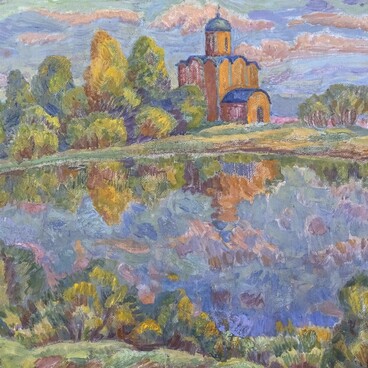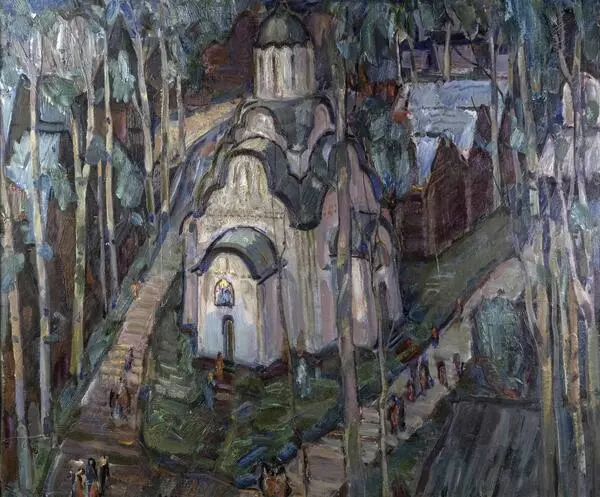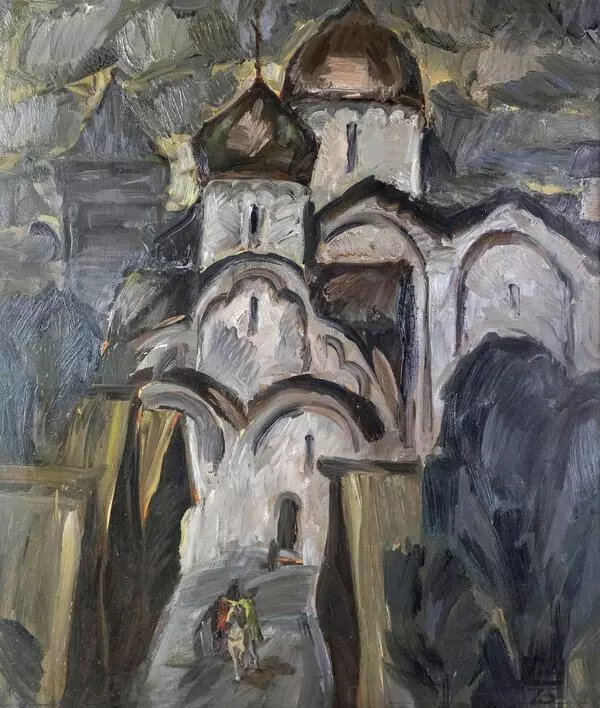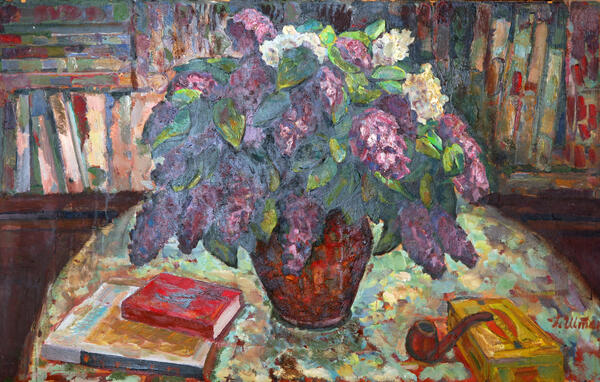From the beginning of the 12th to the 16th century, 62 monasteries were established in Veliky Novgorod. 22 of them — their entire ensembles or separate buildings — have survived to the present day, and the churches of the Yuriev (St. George’s) and Antoniev (St. Anthony’s) Monasteries, as well as the Sophia and Saint Nicholas Cathedrals, still form and dominate the appearance of the city.
The construction of monasteries was paid for and ordered by princes, representatives of boyar families and especially archbishops, who were not only church figures, but also actively engaged in political affairs. The Antoniev Monastery, according to a common version, was founded by a noble Roman who used his own money; the Yuriev and Saint Panteleimon Monasteries — by Princes Vsevolod and Iziaslav Mstislavich.
Prince Yaroslav Vladimirovich initiated the construction of the Transfiguration Monastery on Nereditsa (1198), in memory of two young princes who died, while his wife, Princess Elena, founded the Mikhalitsky Monastery with the Church of the Nativity of the Theotokos.
Thanks to the efforts of St. Archbishop Martyrius (Rushanin), the St. Nicholas Monastery appeared on the Vishera River, the Transfiguration Cathedral was constructed in Russa, and the Resurrection Church was built on Lake Myachino.
The founder of the St. Euphemia Monastery, erected in 1197, was the daughter of Zhiroshka Gorodshinich, Polyuzhaya.
In 1224, in the Slavensky End (district) of the city, by order of the posadnik (mayor) Semyon Borisovich, the churches of St. Paul, St. Simeon the God-Receiver and Saints Constantine and Elena were built; in 1238, under the rule of the posadnik’s widow, the complex became part of the St. Paul Monastery. The St. Cyril Monastery on Seleznyov Island grew up around a stone church consecrated in the name of Saints Cyril and Athanasius of Alexandria. Its construction was ordered by the brothers Dmitry and Konstantin.
Monasteries have been preserving cultural traditions since ancient times; monks copied books, kept chronicles, and collected books. In the 12th century, a list for the archbishop’s chronicle was compiled for the Yuriev Monastery. Local monks kept updating it until 1342. The list became the basis of the Novgorod First Chronicle.
The oldest Gospel, rewritten in the 12th century by Fyodor Ugrinets, was also created there.
Judging by the autographs left, the scribes from the Lazarus Monastery worked on it: Goroden, Matthew, Lawrence and “Dimka”.
The author of the treatise on numbers, the mathematician Kirik, worked in the Antoniev Monastery. The 12th-century churches, including the Nativity Church in the Antoniev Monastery, St. George’s Church in the Yuriev Monastery, and the Annunciation Church on Lake Myachino, are famous for frescoes made in the Byzantine style.
During the years of the Tatar-Mongol invasion, the construction of monasteries was suspended for a long time, but in the 14th–15th monastic life was booming. The Novgorod bishops John, Moses, Evfimy II and Jonah of the Otensky Monastery played a major role in it.
The construction of monasteries was paid for and ordered by princes, representatives of boyar families and especially archbishops, who were not only church figures, but also actively engaged in political affairs. The Antoniev Monastery, according to a common version, was founded by a noble Roman who used his own money; the Yuriev and Saint Panteleimon Monasteries — by Princes Vsevolod and Iziaslav Mstislavich.
Prince Yaroslav Vladimirovich initiated the construction of the Transfiguration Monastery on Nereditsa (1198), in memory of two young princes who died, while his wife, Princess Elena, founded the Mikhalitsky Monastery with the Church of the Nativity of the Theotokos.
Thanks to the efforts of St. Archbishop Martyrius (Rushanin), the St. Nicholas Monastery appeared on the Vishera River, the Transfiguration Cathedral was constructed in Russa, and the Resurrection Church was built on Lake Myachino.
The founder of the St. Euphemia Monastery, erected in 1197, was the daughter of Zhiroshka Gorodshinich, Polyuzhaya.
In 1224, in the Slavensky End (district) of the city, by order of the posadnik (mayor) Semyon Borisovich, the churches of St. Paul, St. Simeon the God-Receiver and Saints Constantine and Elena were built; in 1238, under the rule of the posadnik’s widow, the complex became part of the St. Paul Monastery. The St. Cyril Monastery on Seleznyov Island grew up around a stone church consecrated in the name of Saints Cyril and Athanasius of Alexandria. Its construction was ordered by the brothers Dmitry and Konstantin.
Monasteries have been preserving cultural traditions since ancient times; monks copied books, kept chronicles, and collected books. In the 12th century, a list for the archbishop’s chronicle was compiled for the Yuriev Monastery. Local monks kept updating it until 1342. The list became the basis of the Novgorod First Chronicle.
The oldest Gospel, rewritten in the 12th century by Fyodor Ugrinets, was also created there.
Judging by the autographs left, the scribes from the Lazarus Monastery worked on it: Goroden, Matthew, Lawrence and “Dimka”.
The author of the treatise on numbers, the mathematician Kirik, worked in the Antoniev Monastery. The 12th-century churches, including the Nativity Church in the Antoniev Monastery, St. George’s Church in the Yuriev Monastery, and the Annunciation Church on Lake Myachino, are famous for frescoes made in the Byzantine style.
During the years of the Tatar-Mongol invasion, the construction of monasteries was suspended for a long time, but in the 14th–15th monastic life was booming. The Novgorod bishops John, Moses, Evfimy II and Jonah of the Otensky Monastery played a major role in it.





